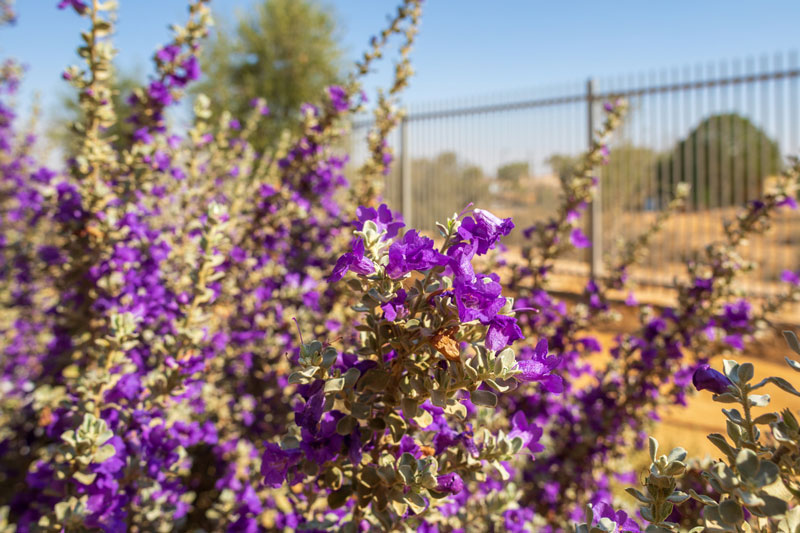
Texas sage is a beautiful native landscaping plant.
There are plenty of things to do in the garden in March. Here are a handful:
1. Lawn duties: Aerate and top dress with 1 inch of compost.
2. Chip the last of your cedar and spread it around the house. This will help deter fleas.
3. Till in the winter crops. Allow two weeks for the cover crop to decompose in the soil before planting there again.
4. Prune hibiscus and spring flowering shrubs and trees AFTER they bloom.
5. Plant a new strawberry bed or restore an existing bed by adding compost and other soil amendments.
LAST FREEZE?
Pick a day, any day, and you can match it to a season. Officially, the first day of spring, or the vernal equinox, is March 19. However, the day of the last freeze is still up for grabs. In the past, we have had freezes from March 21-30.
Nature has some cues. Peach trees can get confused, as we have seen in past years. What we haven’t seen yet is that beautiful spring mesquite green. Buds just popping out of the limbs are a strong indicator our last freeze has passed. Yet, the fail-safe, tell-tale sign is when pecan trees begin to show leaves. At that point, you can safely put away winter coverings for your plants.
NATIVE PLANTS
Mike Riley of the Native Plant Society of Texas offers advice to consider with spring fast approaching:
How can you start enjoying native plant benefits?
Beware of exotics and ornamentals
Our native trees, shrubs, flowers, and grasses that support habitats for wildlife are being destroyed by aggressive building development. This development is introducing exotic and ornamental plants based on low plant prices or limited understanding of native benefits by builders, landscapers, and nurseries. These exotics negatively impact our ecosystems.
Many exotic landscaping plants available in nurseries are species introduced from other countries and have become invasive pests that outcompete native species and degrade the habitat in remaining natural areas. These exotics, when compared with natives, require more water, pesticides, and herbicides. Some Hill Country cities estimate that over 50 percent of their water usage is to maintain landscapes and lawns.
Look to the native plant experts
The knowledgeable staff at nurseries and retail stores are ready to help you plan, select, and install native plants; however, these experts must be sought out. The native plant offerings from big-box home improvement stores can be limited.
Steps to the native benefits
Visit nurseries and talk to native plant experts, who should ask many questions about your environment and landscaping goals. With a landscaping plan, you can gradually replace non-natives with native plants, so, in time, you will enjoy the benefits.
Look for free seminars and classes held by nurseries, including:
- Backbone Valley Nursery in Marble Falls
- Friendly Natives in Fredericksburg
- The Natural Gardener in Bee Caves
A comprehensive nursery list is on the Native Plant Partners' Natives Improve & Conserve Environments (NICE) website. You might need to guide some landscapers toward the plants you want.
CONCLUSION
A native plant landscape habitat works in harmony with its surroundings. Native plants provide many benefits to our environment and us. Moving to a native plant landscape is definitely worth the effort.
"Till" next time: Keep your souls and soles in your garden!
Remember the True Master Gardener: Jesus said, “I am the vine; my Father is the Gardener.” John 15:1
Contact Bill Luedecke at The Luedecke Group Realtors at 512-577-1463 or email him at bill@texasland.net. Contact Martelle Luedecke at Luedecke Photography at 512-769-3179 or luedeckephotography@gmail.com.











